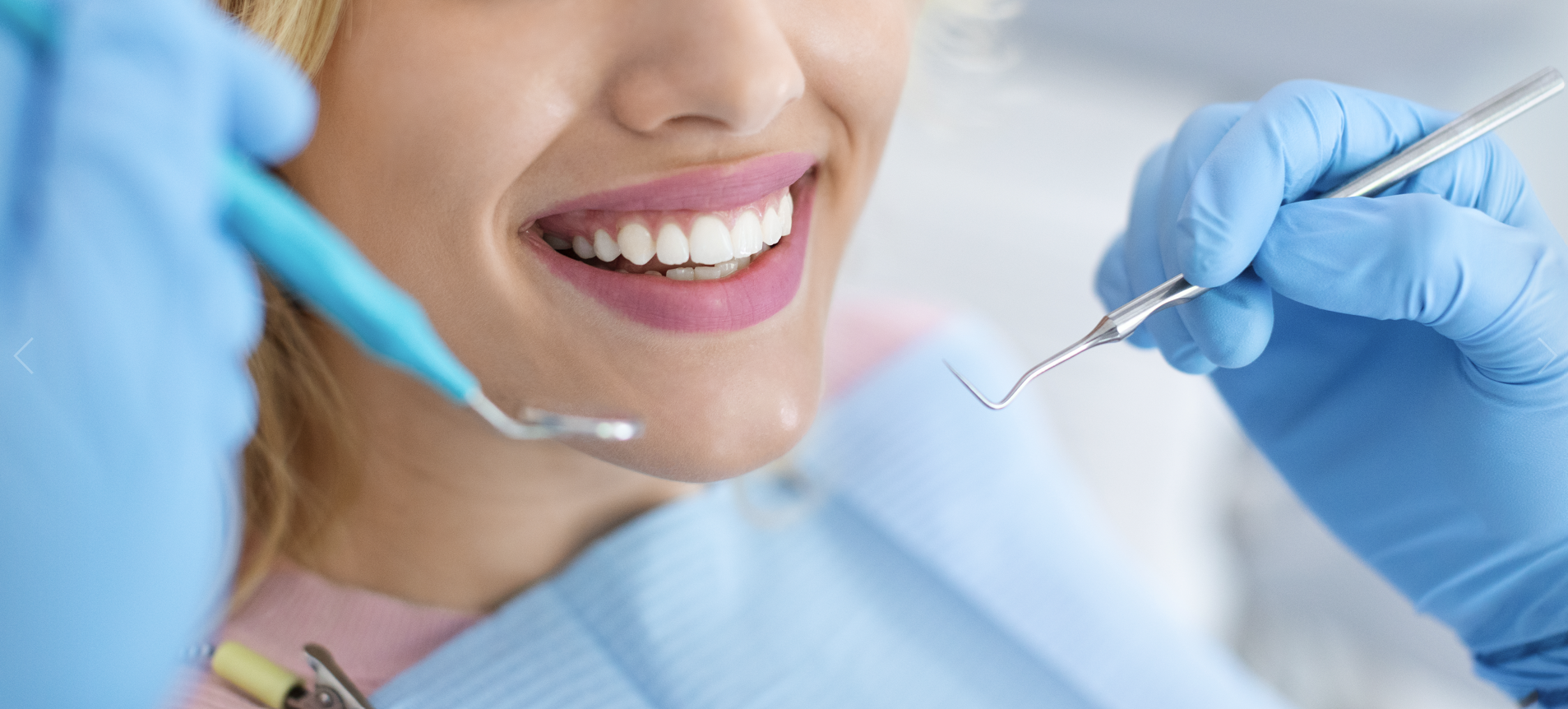It May Not Be What You Think!
How many times have you heard to avoid cavities or tooth decay, you need to be brushing and flossing more? While brushing and flossing are one of the best ways to avoid tooth decay, it isn’t the whole story. We see patients with immaculate oral hygiene, very little bacterial plaque who have lots of cavities while other patients, who look like they hardly ever brush their teeth with zero cavities! How is this fair? Read on!

What is Tooth Decay?
Tooth decay is a bacterial infection that can damage the enamel, which is the outer coating of our teeth. Decay can attack both the enamel and then dentin layer, which then allows the infection to spread like wildfire.
The decaying process starts when a buildup of bacteria plaque in the mouth produces acids. The acids in the plaque break down the enamel and cause cavities or tooth decay. Fortunately, if caught early enough, dental professionals, like Dr. Carla Yamashirio, can treat cavities and prevent further damage.
First, the Typical, but Important, Advice
Avoid Sugary Foods
One of the best ways to prevent tooth decay is to avoid sugary foods and drinks. This especially includes hard candy, lollipops, taffies and caramels, which stay in the mouth for long periods of time and can get deep into crevices and detach dental work. While fruits in general are the better choice to satisfy the sweet tooth cravings, sticky bananas and acidic fruits may also contribute to tooth decay.
Dietary Choices
Diet plays a very important role in the health of teeth. A healthy diet can reinforce teeth, prevent infections and create a favorable environment for good oral bacteria. In contrast, a diet high in starchy foods can promote tooth decay. This is because these foods are broken down by enzymes, releasing simple sugars into the mouth.
It should also be noted that bready, dense foods can get crammed into crevices within the mouth and are much more difficult to remove with regular brushing and flossing. The food particles left behind in your teeth after eating is then consumed by oral bacteria, which feed on sugars and produce acids that are the main enemy of tooth enamel.
The most effective way to prevent tooth decay is to avoid sugar-laden beverages and sugar-filled foods. The best drinks to consume are water and unsweetened drinks. Minimize soft drinks and lemonade, which are often high in sugar and acids. Watch out for savory mocha and latte’s which often have a high sugar content. Drinking these beverages throughout the day exposes teeth to a constant sugar and acid bath, which can cause decay. The bottom line is brushing, flossing and even simply rinsing your mouth with water after eating and drinking will help to avoid tooth decay.

The Lesser-Known Reasons for Tooth Decay
Dry Mouth
If you brush, floss and eat healthy whole foods but still have cavities, you could have a dry mouth. Breathing with your mouth is unhealthy and can leave you with a dry mouth. So can certain medications. An acidic oral environment also promotes tooth decay. Saliva is an important natural buffer neutralizing the acids and can minimize incidents of tooth decay. Saliva also has digestive enzymes to begin the breakdown of carbohydrates and fats. It even has trace amounts of an enzyme to help control blood pressure1. Healthy nasal breathing can avoid a dry mouth and decrease your risk of tooth decay.
Eat with your mouth, breathe with your nose!
Teeth Grinding and Clenching
Teeth grinding and clenching cuts off the blood circulation containing oxygen and nutrients from your teeth. Teeth that are starved of oxygen and nutrients cannot be healthy and are more prone to tooth decay.
Without oxygen and nutrients, teeth can become more sensitive, too! Dr. Felix Liao, author Early Sirens, coined the term “Tooth Angina” to describe the condition. Just as we can have painful heart angina from the lack of oxygen and we experience tooth pain or “tooth angina” from the lack of oxygen to our teeth.
Another interesting fact is that healthy teeth recover after dental work whereas teeth that lack oxygen (and nutrients) struggle to recover and sometimes do not. Root canals are often the recommended treatment for teeth that are in pain. Let’s understand why you have pain so we can get to the root of the problem instead.
A Sign of Sleep and Breathing Disorder (SBD)
Healthy breathing is nasal breathing. Nasal breathing activates the lower lobes of the lungs which in turn activates the rest, digest, repair, grow, detox part of our nervous system. Mouth breathing activates the upper lobes of our lungs which puts us into the state of fight and flight. When fight and flight is turned on, rest, digest, repair, grow and detox tones down.
Our teeth are a part of our digestive system. In fight and flight, our body prioritizes oxygen supply to our brain and heart first to keep us alive, and to our muscles so we can fight or run. When digestion is toned down because we are in flight and flight mode, the teeth suffer because our teeth are part of the digestive system. Teeth are once again, as in teeth grinding, not receiving the oxygen needed to be healthy and we become more prone to tooth decay.
Brushing and Flossing to Avoid Tooth Decay
Let’s get back to the important basics!
Brushing and flossing regularly are the most important actions you can take for the health of your teeth and gums. Proper tooth brushing helps remove plaque buildup, which causes cavities and gum disease. While most plaque can be removed by brushing, some stays behind to form hardened tartar that only dental professionals can remove. If left untreated, tartar can also lead to tooth decay and gum disease.
Be sure to schedule regular cleanings with your dentist to avoid the potential complications of tartar buildup. Some people need to go every six months and some as often as every three months – everyone’s needs are different. It is very important for the health of your mouth in the long run to get cleanings to prevent and avoid tooth decay.
Brushing Technique to Avoid Tooth Decay
Teeth that are less crowded are easier to brush and floss effectively. If you have crowded and crooked teeth, we can assist with the growth (expansion) of your jaw so that your teeth can have the space needed to naturally align. We do this with the Vivos Method™ and HealthyStart® oral appliances. For those without the oral contributions to breathing and sleep issues, we offer CandidPro® clear aligner system to straighten teeth for easier cleaning and a beautiful smile.
Brushing your teeth properly is an easy process that is equally as easy to establish as a routine. Follow these steps to ensure you are brushing thoroughly:
An electric toothbrush like the Sonicare® or Oral B® Spin Brush, will be much more effective than a manual toothbrush. Use a soft-bristled toothbrush and gently brush along the gumline where soft plaque bacteria like to collect and can easily be brushed off. Remember to brush along the gumline on the inside tongue side of your mouth too! Don’t forget the chewing surfaces where food and bacteria can collect in the natural grooves and crevices of your teeth.
Establish a brushing pattern. If you were at a chalk board or dry erase board that was completely covered with chalk/dry ink and randomly erased. Step back and you’ll see all the places you missed. However, if you erased from the upper left-hand corner of the board, all the way across to the other side, dropped down one row and erased clear to the other side, keeping a pattern, you will have a much cleaner board with very few if any missed spots.
It’s the same with brushing our teeth. If you randomly brush your teeth, there will be many areas that you would have missed. Develop a pattern like starting way in the back upper right tooth, brushing along the gumline all the way across to the last tooth on the upper left. Then brush along the roof side of your teeth from one end to the other. Follow this same pattern with your lower teeth.
Only floss the teeth you plan to keep! Flossing removes bacteria that causes tooth decay and gum disease. Keep this in mind when flossing; every tooth wants a hug. After taking the floss through the contact of the teeth, use the floss to hug around each tooth and move it in an up and down direction to remove the soft plaque from under the gum area between your teeth.
Inevitably, there will be soft plaque that you miss brushing and flossing. Soft plaque eventually becomes hardened tarter. This is where a dental professional comes in and uses their special instruments and techniques for its safe removal.
Are You in Need of a Check Up or Cleaning?
CONTACT US TODAY
*References:

